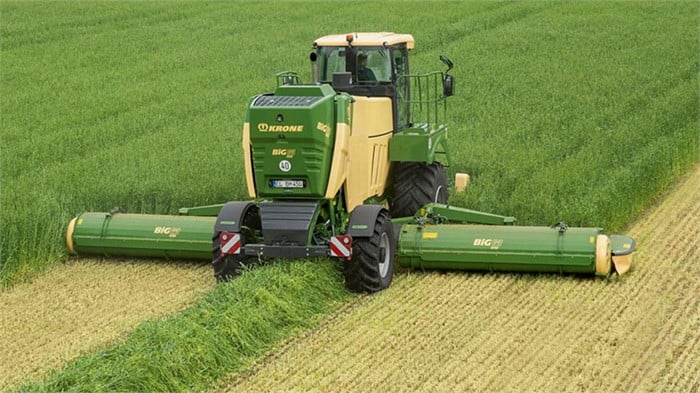
Forage quality tops the list for important contributions to the health and profitability of all livestock but often remains an afterthought. The dairy industry has long been preached to about lower ash content for increased milk production, and multiple studies have proven the correlation. But what about beef, small ruminant and equine producers? Studies have consistently shown the nutrient content of forage can impact the growth and performance of all animal species, including rate of gain.
The digestible content of forage remains a top priority as it serves a primary source of essential nutrients like carbohydrates, digestible proteins, vitamins, and minerals. These building blocks for overall health and well-being are too important to overlook. Modern farmers no longer can afford to feed livestock lesser quality and sometimes spoiled forage leftover from the most recent rain or bales not wrapped in time. Producers today understand the importance of feeding the best to achieve the highest resale value or profitability through rate of gain.
The equipment you chose plays an important role in forage quality. First, you have cutting and conditioning. Equipment providing a precise cut capable of ground following will pull much to less dirt and foreign matter into the crop. The type of conditioning varies with the crop and drying days. The three main types of conditioning on most modern mowers are rollers, either rubber or steel, to crimp the crop and V-tines to scrape the wax layer of the crop.
The KRONE exclusive steel M-Roll super conditioner is superior to other roll conditioners in its ability to provide an increased number of crimps without over processing the crop. Rather than the repeated single crimp found with traditional roll conditioners, the M-Roll crimps the crop stem twice with each contact. Doubling your crimp lessens dry-down time even more. This can be a game changer.
After mowing and conditioning, you may choose to utilize a tedder to fluff and spread the crop for greater sun exposure to speed up the drying process. When looking for a tedder, it is important to see the spreading pattern to make sure you aren't moving clumps from point A to point B, but rather spreading the swath into a thin layer across the entire cut area.
Next, we rake. Much attention has been given to various styles of rakes and the controversy over which is the best for high quality forage. Primarily rake choices include wheel rakes, rotary rakes, and mergers. When speaking of forage quality, the goal is to achieve the lowest ash content and least amount of leaf loss. Lessening any type of ground contact is very important to keep dirt (ash) out of the windrow. Wheel rakes provide the greatest amount of ground contact, and rotary rakes provide the least.
When baling, opt for balers with features to produce tight and well-formed bales and possibly a cutting option to dramatically reduce TMR mixing time. When round baling, one distinct advantage is a baler with the capability to make a bale with variable density zones. The density zones create a customized bale for more flexibility when feeding while achieving maximum bale weights. Bales should be wrapped, bagged, or stored indoors for the least amount of loss and contamination.
The end-result needs to be at the forefront of each step, so analyzing every step in the process is critical to achieve your end goals.



